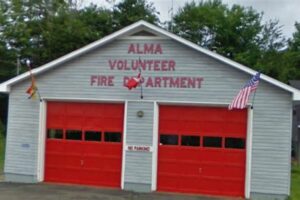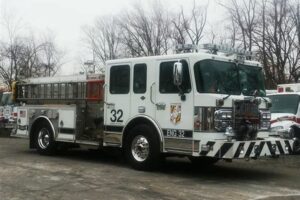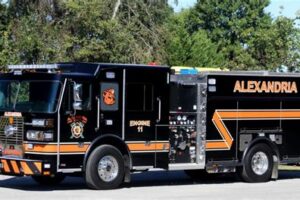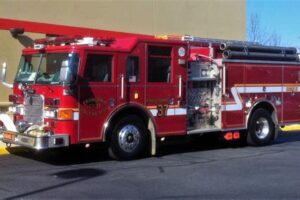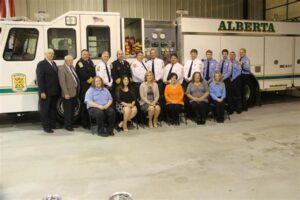Table of Contents
Learn about the average response time for volunteer fire departments and understand how their quick response plays a crucial role in emergency situations. Discover the factors that impact response times and the importance of efficient firefighting services in ensuring public safety.
When disaster strikes, every second counts. In the midst of chaos and uncertainty, a well-equipped and swift response team can mean the difference between life and death. Volunteer fire departments play a crucial role in ensuring the safety and well-being of communities across the nation. With their selfless dedication and tireless commitment, these unsung heroes are often the first to arrive at the scene of an emergency. However, as vital as their services are, it is important to examine and understand the average response time for volunteer fire departments. By delving into this critical aspect, we can gain a deeper appreciation for the challenges they face and the impact their prompt actions have on saving lives and protecting property.
The Importance of Quick Response Times
When it comes to emergencies, every second counts. In the case of fires, a quick response from fire departments can mean the difference between saving lives and losing them. While many cities and towns have professional fire departments that are staffed 24/7, there are also numerous volunteer fire departments that serve rural or underserved areas. These dedicated volunteers often put their lives on hold to respond to emergency calls and provide critical assistance. However, one crucial aspect that needs to be considered is the average response time for volunteer fire departments.
How is Response Time Measured?
Response time is typically measured from the moment a call is received by the fire department to the moment the first unit arrives on the scene. This includes the time it takes for the dispatcher to receive the call, alert the volunteers, and for the volunteers to travel to the location. It is important to note that response times can vary depending on factors such as the distance to the incident, traffic conditions, and the availability of volunteers.
National Averages
According to national statistics, the average response time for volunteer fire departments in the United States is approximately 10 minutes. This time frame includes both the dispatch and travel time. However, it is essential to understand that this is an average and response times can vary significantly depending on the specific circumstances of each incident.
Rural Challenges
Rural areas often face unique challenges when it comes to response times for volunteer fire departments. These areas typically have larger coverage areas and longer travel distances, which can result in longer response times. Additionally, volunteers may have to travel from their homes or workplaces to the fire station before responding to a call, further delaying their arrival at the scene.
Recruitment and Retention
One of the factors that can impact response times for volunteer fire departments is the recruitment and retention of volunteers. As volunteerism declines across many communities, it becomes increasingly challenging for these departments to maintain adequate manpower. With fewer volunteers available, it takes longer to assemble a crew and respond to emergencies, ultimately affecting response times.
Training and Preparedness
To ensure efficient response times, volunteer fire departments must invest in training and preparedness. Volunteers need to be properly trained in firefighting techniques, equipment operation, and emergency medical procedures. Regular training sessions and drills help volunteers stay up-to-date with the latest techniques and improve their response times when faced with real emergencies.
Collaboration with Professional Departments
In some regions, volunteer fire departments work in collaboration with professional departments to enhance response times. This partnership allows for a quicker response by combining the resources and personnel of both departments. By sharing responsibilities and coordinating efforts, response times can be significantly improved, especially in areas where professional departments may take longer to reach.
Investment in Technology
Advancements in technology have also played a significant role in improving response times for volunteer fire departments. Mobile applications and computer-aided dispatch systems enable faster communication between dispatchers and volunteers. These systems can provide real-time information about the incident location, optimize route planning, and even track the progress of responding units, ensuring a more efficient response.
Community Support and Funding
Another crucial factor that affects response times for volunteer fire departments is community support and funding. These departments heavily rely on the support and donations from their local communities to acquire the necessary equipment, maintain facilities, and provide ongoing training. Adequate funding allows volunteer departments to invest in resources that can help improve response times and ensure the safety of both volunteers and the communities they serve.
The Continuous Effort for Improvement
While volunteer fire departments face unique challenges, they are continuously striving to improve their response times. By addressing recruitment and retention issues, providing ongoing training, collaborating with professional departments, and leveraging technology, these dedicated volunteers are making significant strides in reducing response times and minimizing the impact of emergencies on their communities.
A Grateful Community
It is important to recognize and appreciate the dedication and sacrifices made by volunteer firefighters. Their commitment to serving their communities and protecting lives should be acknowledged and supported. By understanding the average response times for volunteer fire departments and the challenges they face, we can contribute to creating safer communities for everyone.
Introduction
As communities rely on their local volunteer fire departments for emergency services, it becomes crucial to examine the average response time of these dedicated individuals. This article aims to shed light on the response time statistics for volunteer fire departments, providing a comprehensive analysis of the challenges they face and the impact it has on their ability to effectively protect the community.
The Definition of Response Time
Response time refers to the duration it takes for a volunteer fire department to reach a location after receiving an emergency call. It encompasses the time from the initial call to the moment when the first fire engine or emergency vehicle arrives on the scene. Factors such as distance, road conditions, and volunteer availability can significantly impact response time.
Influencing Factors of Response Time
The response times of volunteer fire departments are influenced by various factors. One significant factor includes the geographical size and population density of the area they serve. Urban areas may have shorter response times due to the proximity of the fire station, while rural regions might experience longer response times due to longer distances and limited resources.
Volunteer Fire Department Staffing Challenges
One critical challenge faced by volunteer fire departments is ensuring adequate staffing to maintain quick response times. Volunteers often have other jobs or commitments, which may delay their availability during emergencies. While some departments implement shift-based schedules or hire part-time staff to address this issue, limited funding and lack of personnel remain persistent challenges.
The Impact of Equipment and Technology
Having efficient and up-to-date equipment and technology plays a vital role in reducing response time for volunteer fire departments. Equipping these departments with advanced communication systems, GPS devices, and modern firefighting tools can help streamline their operations and enhance their response capabilities.
Collaboration with Surrounding Departments
Volunteer fire departments often collaborate with neighboring departments to improve response times. By sharing resources, coordinating training sessions, and establishing mutual aid agreements, these departments can enhance their response capabilities. Such collaborations can prove crucial, especially in situations that require additional manpower or specialized equipment.
Response Time Benchmarks and Standards
Various organizations, such as the National Fire Protection Association (NFPA), set response time benchmarks and standards for fire departments nationwide. These benchmarks serve as guidelines for volunteer fire departments to assess their performance. Adhering to these standards can aid in identifying areas for improvement and ensuring that response times align with industry best practices.
Community Involvement and Support
Community involvement and support are paramount in maintaining efficient response times for volunteer fire departments. Residents can contribute by volunteering their time, advocating for adequate funding and resources, and participating in fire safety programs. With the community’s backing, volunteer fire departments can enhance their capabilities and improve their response times, ultimately ensuring the safety and well-being of the neighborhoods they serve.
Point of View: Average Response Time For Volunteer Fire Departments
1. Volunteer fire departments play a crucial role in ensuring the safety and well-being of communities across the nation. Despite their dedication and commitment, one aspect that needs to be closely examined is the average response time for these volunteer-based organizations.
2. The average response time refers to the duration it takes for volunteer firefighters to arrive at the scene after receiving an emergency call. This metric holds paramount importance as it directly impacts the effectiveness of firefighting operations and, ultimately, the safety of individuals and property.
3. It must be acknowledged that volunteer fire departments face unique challenges that can significantly affect their response times. Unlike their full-time counterparts, volunteers have other commitments such as work and family obligations, making it difficult to respond immediately. Additionally, many volunteer departments rely on limited resources, including fewer personnel and older equipment, which can further hinder their ability to arrive swiftly.
4. The issue of average response time for volunteer fire departments is not one to be taken lightly. In emergency situations, every second counts, and delays can have dire consequences. Longer response times may result in increased property damage, greater risk to human life, and a heightened likelihood of the situation escalating beyond control.
5. To address this concern, it is imperative for communities and local governments to support and invest in their volunteer fire departments. Adequate funding should be allocated to improve infrastructure, procure modern equipment, and provide comprehensive training for volunteers. Moreover, raising awareness about the importance of timely emergency response and encouraging community members to join as volunteers can help alleviate the strain on existing firefighting personnel.
6. While it is undeniable that volunteer fire departments face challenges in achieving optimal response times, it is crucial for society as a whole to recognize their invaluable contributions. These brave men and women put their lives on the line to protect others, often without any compensation. As responsible citizens, we must rally behind our local volunteer fire departments, ensuring they receive the support they need to enhance their response times and continue serving our communities selflessly.
7. The average response time for volunteer fire departments should not be viewed as a mere statistic. It is a reflection of the dedication and sacrifices made by volunteers who willingly put themselves in harm’s way to keep our neighborhoods safe. By acknowledging the challenges they face and working towards improving their response times, we can ensure a safer and more secure future for everyone.
Thank you for taking the time to visit our blog and read our article on the average response time for volunteer fire departments. We hope that you found the information we provided both informative and interesting. In this closing message, we would like to summarize the key points discussed in our article and leave you with some final thoughts.
Firstly, we explored the importance of response time in emergency situations and how it can greatly impact the outcome of a fire or other life-threatening event. Volunteer fire departments play a crucial role in providing quick and efficient emergency response services in many communities. However, due to various factors such as limited resources and availability of volunteers, their average response time tends to be longer compared to that of paid fire departments.
Despite these challenges, it is important to acknowledge and appreciate the dedication and commitment of volunteer firefighters who selflessly give their time and effort to protect their communities. They undergo extensive training to ensure they are equipped with the necessary skills to handle emergency situations effectively. The fact that they are willing to put their lives on the line for the safety of others is truly commendable.
In conclusion, while the average response time for volunteer fire departments may be longer than paid departments, it is crucial to understand the unique circumstances under which they operate. It is important for communities to support their local volunteer fire departments by providing resources, funding, and encouraging more individuals to join their ranks. By doing so, we can work towards improving response times and ensuring the safety of our communities.
We hope that this article has shed some light on the average response time for volunteer fire departments and the challenges they face. If you have any further questions or would like to contribute to the discussion, please feel free to leave a comment below. Thank you once again for visiting our blog, and we look forward to bringing you more informative articles in the future.
Video Average Response Time For Volunteer Fire Departments
People Also Ask About Average Response Time For Volunteer Fire Departments:
What is the average response time for volunteer fire departments?
How do volunteer fire departments manage response times?
Are response times longer for volunteer fire departments compared to professional fire departments?
What measures are taken to improve response times for volunteer fire departments?
Can response times impact the effectiveness of volunteer fire departments?
On average, volunteer fire departments aim to respond to emergency calls as quickly as possible. However, it is important to note that response times can vary depending on various factors, including the location of the incident, the availability of volunteers, and the distance between the fire station and the emergency site.
Volunteer fire departments employ several strategies to manage and improve response times. They often rely on efficient communication systems to promptly alert volunteers about emergencies. Additionally, some departments strategically position fire stations to ensure optimal coverage within their jurisdiction, reducing travel distances and response times.
In some cases, response times for volunteer fire departments may be longer compared to professional fire departments. This is primarily due to the fact that volunteer firefighters typically have other commitments, such as work or family obligations, which can affect their availability to respond immediately. However, many volunteer fire departments work diligently to minimize response times through proper training, utilizing technology, and implementing effective response protocols.
Volunteer fire departments continuously strive to enhance their response times. Some common measures they take include recruiting and training more volunteers to increase overall availability, implementing efficient dispatch systems, and collaborating with neighboring departments to provide mutual aid when necessary. Regular drills and exercises also help volunteers stay prepared and improve their response efficiency.
Response times can have an impact on the effectiveness of volunteer fire departments. Prompt response is crucial in emergency situations, as it allows firefighters to arrive on scene quickly and initiate life-saving actions or prevent further property damage. However, despite potential delays, volunteer fire departments often demonstrate remarkable dedication and resourcefulness to mitigate risks and provide assistance in a timely manner.


